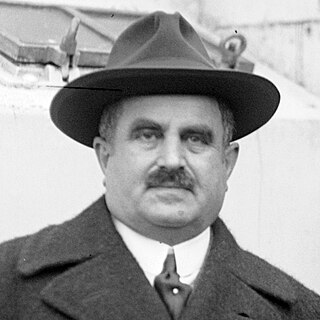
Ernst Lubitsch was a German-born American film director, producer, writer, and actor. His urbane comedies of manners gave him the reputation of being Hollywood's most elegant and sophisticated director; as his prestige grew, his films were promoted as having "the Lubitsch touch". Among his best known works are Trouble in Paradise (1932), Design for Living (1933), Ninotchka (1939), The Shop Around the Corner (1940), To Be or Not to Be (1942) and Heaven Can Wait (1943).

Pola Negri was a Polish stage and film actress and singer. She achieved worldwide fame during the silent and golden eras of Hollywood and European film for her tragedienne and femme fatale roles. She was also acknowledged as a sex symbol.
Hans Dreier was a German motion picture art director. He was Paramount Pictures' supervising art director from 1927 until his retirement in 1950, when he was succeeded by Hal Pereira.

Ossi Oswalda was a German actress, who mostly appeared in silent films, many of which were early films of German filmmaker Ernst Lubitsch. Her characters were often eccentric, spoiled, and child-like. Oswalda was given the nickname 'The German Mary Pickford' due to her popularity at the time.
Ferdinand "Fred" Immler was a German stage and film actor.

Anna Boleyn, also known as Deception, is a 1920 German historical film directed by Ernst Lubitsch. It stars Henny Porten as Anne Boleyn and Emil Jannings as King Henry VIII.

The Spanish Dancer is a 1923 American silent costume epic starring Pola Negri as a gypsy fortune teller, Antonio Moreno as a romantic count, and Wallace Beery as the king of Spain. The film was directed by Herbert Brenon and also features a five-year-old Anne Shirley, appearing under the name "Dawn O'Day." The film survives today.

Harry Liedtke was a German film actor.

The Wildcat, subtitled A Grotesque in Four Acts, is a 1921 German silent, farcical romantic comedy film directed by Ernst Lubitsch. It was shot at the Tempelhof Studios in Berlin.

Madame DuBarry is a 1919 German silent film on the life of Madame Du Barry. It was directed by Ernst Lubitsch, written by Norbert Falk and Hanns Kräly with the title role taken by Pola Negri and Louis XV played by Emil Jannings. Its alternative title for United States distribution was Passion.

Paul Davidson was a German film producer.

Paul Biensfeldt was a German-Jewish stage and film actor.

Die Augen der Mumie Ma is a 1918 German silent horror film directed by Ernst Lubitsch. The film stars Pola Negri as Ma, Emil Jannings as Radu, and Harry Liedtke as Wendland. It was the first collaboration between Lubitsch and Negri, a pairing that would go on to make worldwide successes such as Carmen (1918), Madame DuBarry (1919), and Sumurun (1920).
The Projektions-AG Union was a German film production company which operated between 1911 and 1924 during the silent era. From 1917 onwards, the company functioned as an independent unit of Universum Film AG, and was eventually merged into it entirely.

Carmen is a 1918 German silent drama film directed by Ernst Lubitsch and starring Pola Negri, Harry Liedtke, and Leopold von Ledebur. It was based on the novella Carmen by Prosper Mérimée. Like Bizet's opera Carmen, this film only adapts the third part of Mérimée's novella and transforms the character of Don José at the beginning of the story from bandit on the run to honest man in love with his childhood sweetheart. The film was released with English intertitles in the United States in 1921 under the alternative title Gypsy Blood.

The Flame is a 1923 German silent drama film directed by Ernst Lubitsch and starring Pola Negri, Hermann Thimig, and Alfred Abel. The film is based on a play by Hans Müller. In the United States it was released under the alternative title Montmartre. It was the last film Lubitsch made in Germany before emigrating to Hollywood where he directed his first American film Rosita for United Artists the same year.

The Red Peacock is a 1920 German silent film directed by Paul L. Stein and starring Pola Negri and Victor Varconi. It was shot at the Tempelhof Studios and distributed by UFA. Long thought lost, the film was rediscovered in a New York basement in 2020.
Kurt Richter (1885–1960) was an Austrian art director of the silent era. He designed the sets for more than a hundred films during his career, including a number made by the leading German company UFA where he frequently collaborated with director Ernst Lubitsch.

The EFA Studios or Halensee Studios were film studios located in the Berlin suburb of Halensee. They were a prominent centre of film production in the silent and early sound era. Constructed in 1919 after the First World War, they were part of a wave of modern studios that used artificial lighting rather than the earlier glasshouse studios that relied on natural light. Early productions included The Head of Janus by F.W. Murnau. They were located close to Berlin Zoo and were sometimes also known as the Zoo Studios.















